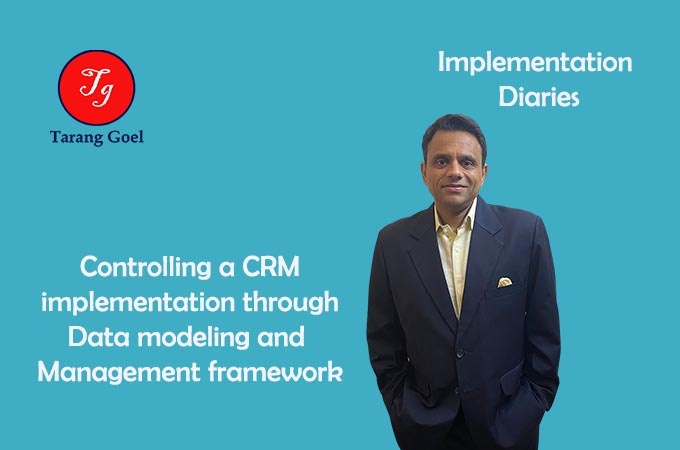A lot of people ask me – What is it that a Solution or an Application architect does on an implementation over and above the roles like Technical Lead, Admin, Business analyst, Developer. My answer is that in addition to designing and testing a solution the most important function of the architect is to control the implementation from Pre-Sales to Go-Live
So, here is a data modeling and management framework through which a CRM program can be comprehensively controlled. The framework can be named as Data Modeling and Management Framework (DMMF)
DMMF is a set of guidelines to model and manage a CRM application’s data. The guidelines are created in the form of WHAT’s , HOW’s and WHEN. These are explained in the form of the questions mentioned below.
DMMF attempts to answer the following questions:
• What is required to model and manage CRM Application data? (WHATs)
• How do we model and manage the data? (How’s)
• The third question deals with WHEN – this is concerned with when do we achieve each WHAT and what is the priority of HOW’s for each WHAT and there can be multiple HOW’s for each WHAT
Why do we need DMMF?
• Set of guidelines to ensure that the rolled out CRM application has data modeled and managed based on best practices and the protocoals of an enterprise
• To ensure that a solid foundation is laid out for plug and play process enablement in CRM
• To ensure quick user adoption post roll out. Built application should be the benchmark for the processes it executes
• To ensure seamless data and process integration
• To invoke early and active participation of all stakeholders concerned with data modeling, business process transformation and data management
• Data Modeling and Management Framework is required for systematic and methodical implementation of CRM platform
• DMMF to be one of the major sources of work (User Stories) to be performed during CRM implementation.
DMMF- WHAT’s and HOW’s?
WHAT’s
• What is the definition of a Customer in CRM?
• What is the CRM’s Data Model?
• Searches- What searches do we want the CRM application to perform?
• What business processes do we want the CRM application to execute? Both in short and the medium run?
• What are the different personas required to execute the CRM processes and what does the process/persona flow look like for each process or a capability in CXP?
• What are the customer scenarios we are trying to model in CRM?
• What data do we want CRM to persist?
• What data do we want CRM to call on demand?
• CRM – the system of record for what Data?
• What does process and data integration look like in CRM?
• What does the initial data load in CRM look like?
• What is the data governance and data quality strategy in CRM?
• What is the user adoption/change management plan/strategy for CRM?
• What are the data naming conventions in CRM?
• What is the level of reporting and analysis required in CRM?
• What is the object, record and field level data security required in CRM?
• What is the level of data encryption required in CRM?
HOW’s
What is the definition of Customer in CRM?
• Ascertain the current definition of customer
• Diagnose the missing view of the customer by listing out pain points with the current view of the customer
• Conduct customer definition sessions with all relevant stakeholders including end users like CSR’s
• Evaluate the future customer out of the box view in Salesforce
• Create the future state of the customer
When’s
When addresses the timeline by which all the how’s of the what’s are figured out and implemented. So, in a nutshell addressing the WHEN creates the roadmap of the implementation.
So to summarize, a solution architect can use the above framework to provide the required thought leadership and direction to an implementation. You must have noticed that it is not possible to provide answer all the How’s in the blog. I will take them separately in this series. Thanks for reading this. I hope this help you in your professional development and provide a perspective on CRM implementations. Please note that I am motivated by your likes, comments and shares.


1 Comment
Shobhit Srivastava
February 6, 2020 - 4:10 amInteresting article, totally agree this should be followed otherwise business comes back with same question and that too after the go-live. This process needs to be incorporated even with those fast paced agile implementations.